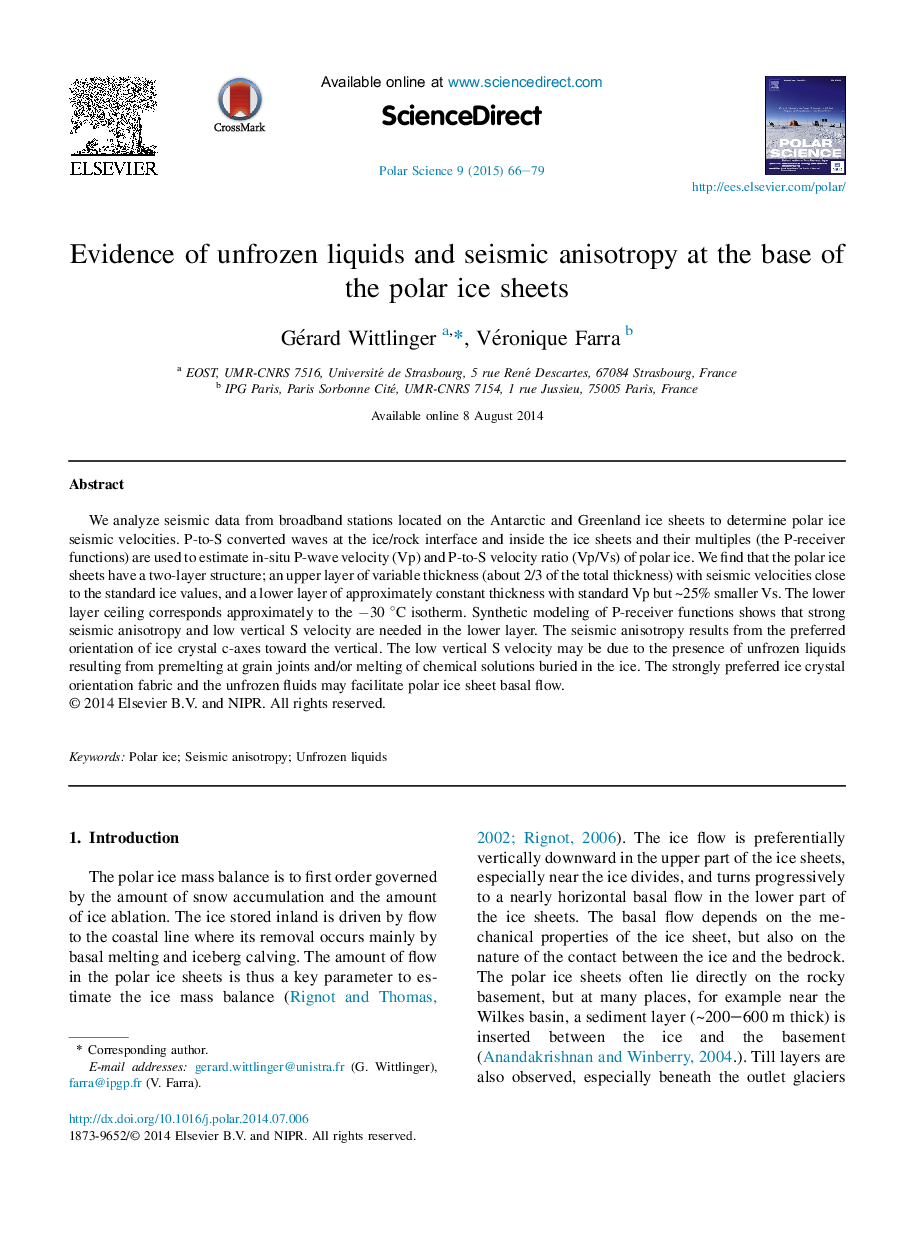| Article ID | Journal | Published Year | Pages | File Type |
|---|---|---|---|---|
| 4683280 | Polar Science | 2015 | 14 Pages |
Abstract
We analyze seismic data from broadband stations located on the Antarctic and Greenland ice sheets to determine polar ice seismic velocities. P-to-S converted waves at the ice/rock interface and inside the ice sheets and their multiples (the P-receiver functions) are used to estimate in-situ P-wave velocity (Vp) and P-to-S velocity ratio (Vp/Vs) of polar ice. We find that the polar ice sheets have a two-layer structure; an upper layer of variable thickness (about 2/3 of the total thickness) with seismic velocities close to the standard ice values, and a lower layer of approximately constant thickness with standard Vp but â¼25% smaller Vs. The lower layer ceiling corresponds approximately to the â30 °C isotherm. Synthetic modeling of P-receiver functions shows that strong seismic anisotropy and low vertical S velocity are needed in the lower layer. The seismic anisotropy results from the preferred orientation of ice crystal c-axes toward the vertical. The low vertical S velocity may be due to the presence of unfrozen liquids resulting from premelting at grain joints and/or melting of chemical solutions buried in the ice. The strongly preferred ice crystal orientation fabric and the unfrozen fluids may facilitate polar ice sheet basal flow.
Keywords
Related Topics
Physical Sciences and Engineering
Earth and Planetary Sciences
Earth and Planetary Sciences (General)
Authors
Gérard Wittlinger, Véronique Farra,
